Hct test. Hematocrit Test: A Comprehensive Guide to Understanding Your Blood Cell Count
What is a hematocrit test? How does it measure your blood cell count? Learn about the purpose, procedure, and interpretation of this important medical test.
Understanding the Hematocrit Test
The hematocrit (Hct) test is a common medical procedure that measures the proportion of red blood cells (RBCs) in your total blood volume. This test provides valuable information about your overall health and can help diagnose various medical conditions. By understanding the hematocrit test, you can gain insights into your body’s blood composition and make informed decisions about your healthcare.
Purpose and Importance of the Hematocrit Test
The hematocrit test is used to determine the percentage of your blood that is composed of red blood cells. Red blood cells are responsible for carrying oxygen throughout the body, and an imbalance in their levels can indicate underlying health issues. The hematocrit test is commonly used to:
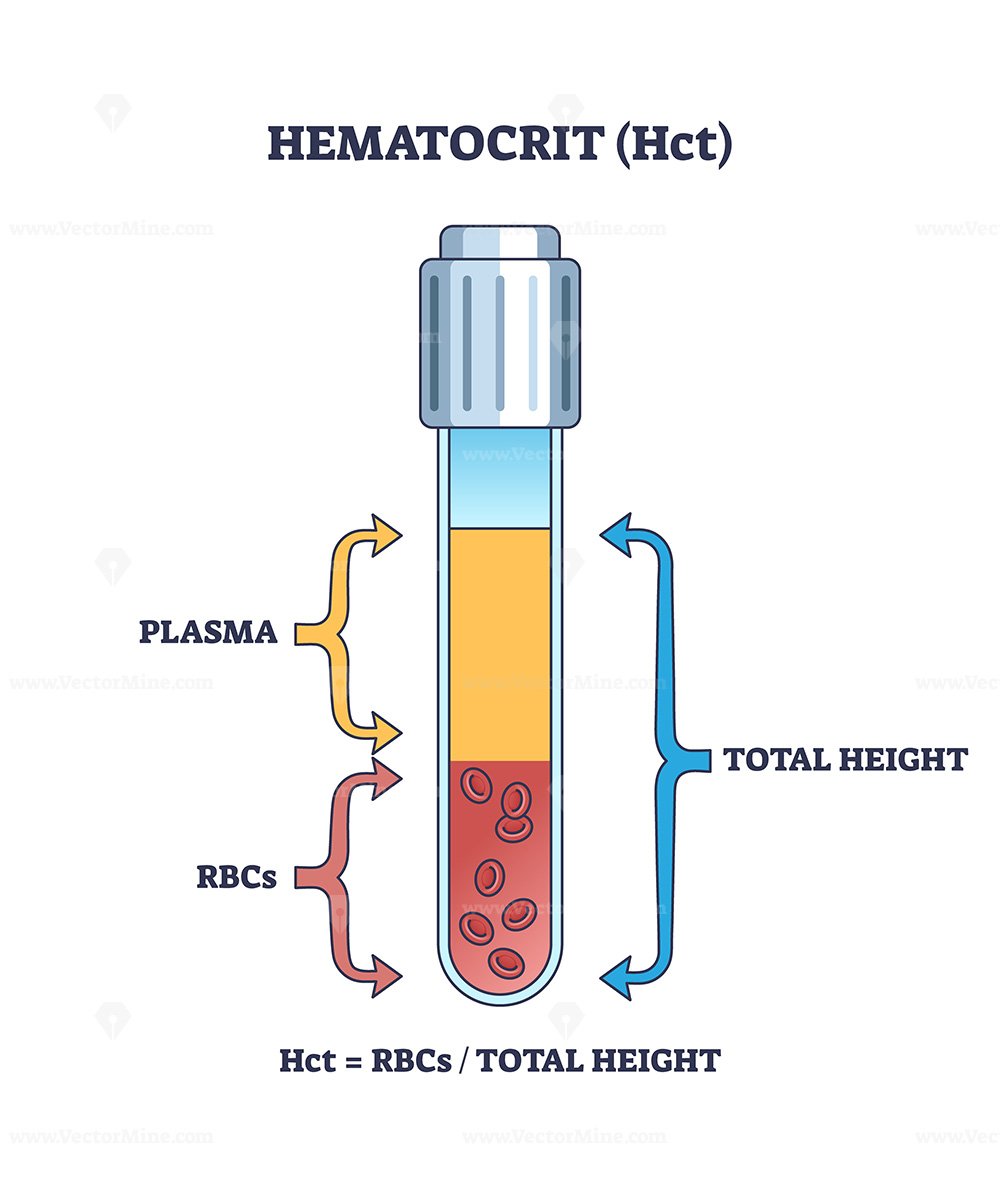
- Diagnose anemia, which is a condition characterized by a low RBC count or low hemoglobin levels
- Monitor the effectiveness of treatments for various blood disorders, such as leukemia or polycythemia vera
- Assess the body’s hydration status and monitor fluid balance
- Evaluate the overall health of the blood and cardiovascular system
How the Hematocrit Test is Performed
The hematocrit test is a simple and routine blood test that can be performed in a healthcare setting or at home with a self-testing kit. The process typically involves the following steps:
- Blood sample collection: A healthcare professional will draw a small sample of blood, usually from a vein in your arm or through a finger prick.
- Centrifugation: The blood sample is then placed in a centrifuge, which spins the sample at high speed to separate the different components of the blood.
- Measurement: The proportion of red blood cells in the sample is measured and expressed as a percentage of the total blood volume.
Normal Hematocrit Range and Interpretation
The normal range for hematocrit levels varies depending on factors such as age, gender, and overall health. Generally, the normal hematocrit range is:

- Adult males: 40.7% to 50.3%
- Adult females: 36.1% to 44.3%
- Children: 31% to 45% (varies by age)
Deviations from the normal range can indicate the presence of various medical conditions:
- Low hematocrit (anemia): Can be caused by blood loss, iron deficiency, or certain chronic diseases
- High hematocrit (polycythemia): Can be a sign of dehydration, lung diseases, or certain blood disorders
Factors that Affect Hematocrit Levels
Several factors can influence a person’s hematocrit levels, including:
- Age and gender: Hematocrit levels typically decrease with age and are generally higher in men than in women.
- Altitude: Living at higher altitudes can increase hematocrit levels due to the body’s adaptation to lower oxygen levels.
- Pregnancy: Hematocrit levels often decrease during pregnancy due to the increased volume of blood plasma.
- Certain medical conditions: Diseases like anemia, dehydration, and certain blood disorders can affect hematocrit levels.
- Lifestyle factors: Factors such as exercise, smoking, and diet can also influence hematocrit levels.
Interpreting Hematocrit Test Results
When interpreting your hematocrit test results, it’s important to consider the normal range and any factors that may have influenced your specific results. Your healthcare provider will review your test results and provide guidance on the next steps, such as further testing or treatment if necessary.
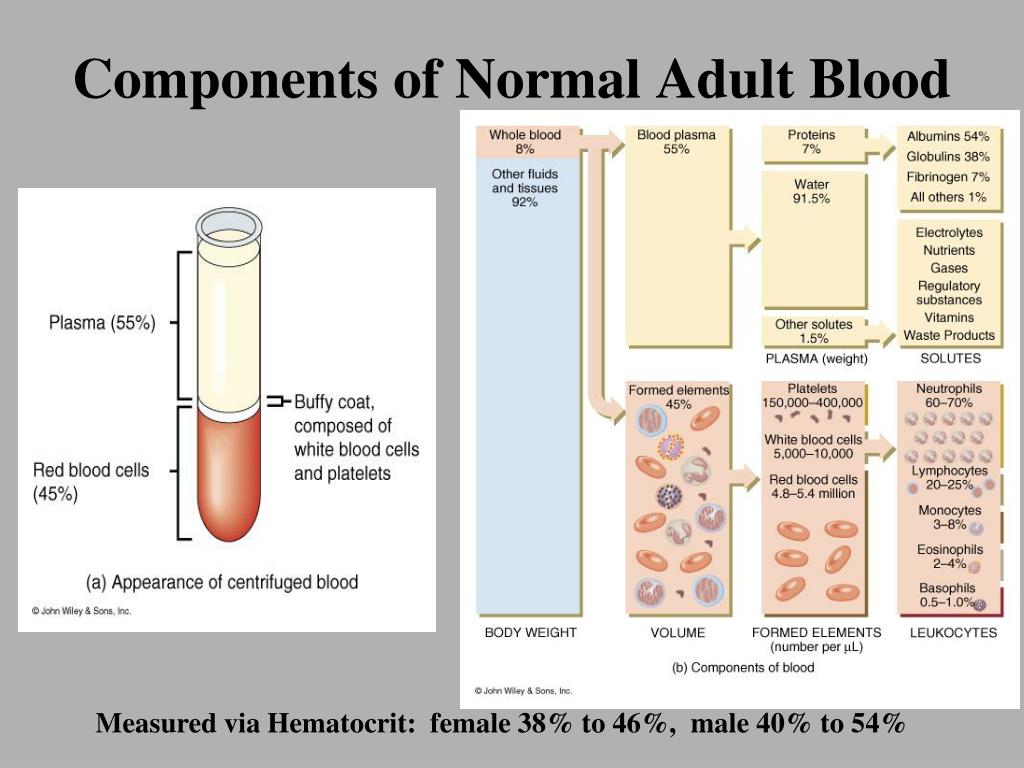
It’s important to note that a single hematocrit test result may not provide a complete picture of your overall health. Your healthcare provider may recommend regular hematocrit testing to monitor any changes over time and identify potential health concerns.
When to Seek Medical Attention
If your hematocrit test results fall outside the normal range, it’s important to discuss the findings with your healthcare provider. Depending on the severity and the underlying cause, they may recommend additional tests, lifestyle changes, or medical treatment. Some situations that may warrant medical attention include:
- Persistent or severe anemia (low hematocrit)
- Polycythemia (high hematocrit) that is not explained by lifestyle factors or altitude
- Symptoms associated with abnormal hematocrit levels, such as fatigue, dizziness, or shortness of breath
- Sudden or unexplained changes in hematocrit levels
Husky Coronavirus Testing | Novel coronavirus information
The UW has updated its COVID-19 policies. Learn more.
Masks remain recommended in facilities where they aren’t otherwise required.
Husky Coronavirus Testing is closing at the end of spring quarter.
As of June 17th we will no longer be distributing PCR swab kits or antigen tests. Antigen tests will still be available through the UW. For more information, please visit our testing page.
You can spread the coronavirus even if you have no symptoms — so for your health and the health of our community, you’re encouraged to enroll in the Husky Coronavirus Testing program. HCT is a voluntary research study that provides COVID-19 testing for University personnel and students.
The program is powered by the Seattle Flu Alliance team — the group that was the first to report community spread of COVID-19 in the United States. If you have questions, please review our testing FAQ. You can also email [email protected] or call 206-616-2414.
You can also email [email protected] or call 206-616-2414.
All nasal swabs collected for COVID-19 testing are also tested for RSV and influenza.
Enrollment for UW students, faculty and staff remains open
Enroll now complete daily check-in access your results
Who should enroll
To make this program effective and protect our community, it’s important that as many people as possible participate. All UW students and personnel who will be at a UW campus or facility are strongly encouraged to sign up if they would like to participate in this research, even if they have been fully vaccinated.
The program is voluntary and available on the Bothell, Seattle and Tacoma campuses. You need a UW NetID to participate and must either work or attend classes at least once per month — either remotely or in person — and live within commuting distance (~30 miles) of the Bothell, Seattle or Tacoma campus. Since Husky Coronavirus Testing is conducted as a voluntary research study, you can opt-out at any time.
You need a UW NetID to participate and must either work or attend classes at least once per month — either remotely or in person — and live within commuting distance (~30 miles) of the Bothell, Seattle or Tacoma campus. Since Husky Coronavirus Testing is conducted as a voluntary research study, you can opt-out at any time.
Medical and health sciences students participating in clinical activities are welcome to participate in Husky Coronavirus Testing, but will also need to continue to follow specific clinical testing protocols. Student-athletes should continue to participate in UW Athletics’ testing program. UW Medicine clinical personnel should continue to follow in UW Medicine’s testing protocol.
What happens when you enroll
If you choose to participate in Husky Coronavirus Testing:
- You’ll complete a baseline questionnaire about your demographics, contact information and housing situation. Depending on your responses about symptoms or recent exposures, you may be asked to visit a testing station when you enroll.

- You’ll get a daily e-mail or text message asking you to fill out a short questionnaire (< 2 min) about whether or not you feel sick or may have been exposed to someone with COVID-19. Questionnaires continue for the duration of participation in the study.
- Didn’t receive your e-mail or text message? You can complete your daily check-in at seattleflu.org/uw/start.
- Based on need and risk, we may ask you to be tested for a viral infection during the academic year, either at an on-campus testing station or by a kit that we mail to your house. This would happen if you are feeling sick or have recently been around a sick person, or recently traveled. We may also request you to get tested even when you do not feel sick to detect COVID-19 in people without symptoms and to improve our understanding of how COVID-19 circulates in the community.
Enroll now
When and where testing takes place
You may pick up a self-test PCR kit from an HCT staff member at one of our testing stations. These kits contain directions about how to swab yourself, and you can drop it off at any time at one of our drop box locations. You do not need an appointment to pick up a kit, and kits must be activated online before being dropped off. Please follow the instructions provided in the self-test kit carefully.
These kits contain directions about how to swab yourself, and you can drop it off at any time at one of our drop box locations. You do not need an appointment to pick up a kit, and kits must be activated online before being dropped off. Please follow the instructions provided in the self-test kit carefully.
Self-test kits
Self-test kits can be picked up at the following locations:
Seattle campus
- The HUB south lobby, in front of the curved staircase by the Starbucks: Monday, Wednesday, Thursday, Friday 9:00 a.m. – 3:00 p.m.; Tuesday 9:00 a.m. – 2:00 p.m.; Saturday 11:00 a.m. – 3:00 p.m.
- Lander Hall front lobby: Monday-Friday 3:00 p.m. – 7:00 p.m.
- Magnuson Health Sciences Center on the 4th floor in the T-wing lobby across from Overpass Espresso, by the skybridge: Monday 10:00 a.m. – 1:30 p.m.; Tuesday 11:00 a.m. – 2:00 p.m.; Wednesday, Thursday, Friday 10:00 a.m. – 2:00 p.m.
- South Lake Union main lobby in the C Building across from the elevators by the 9th Street entrance: Monday-Friday 9:00 a.
 m. – 11:00 a.m.
m. – 11:00 a.m.
Kits can be returned to the drop boxes at those locations during the hours the building is accessible (with the exception of the HUB location, which can only accept kit returns while a staff member is present between 11 a.m. and 2 p.m.). Please note that residence hall access is generally limited to residents and authorized personnel.
UW Bothell and UW Tacoma
- UW Bothell will provide at-home test kits to participants through your daily check-in.
- UW Tacoma, Tacoma Paper & Stationery Building on the ground floor by the east entrance: Monday-Thursday 12:00 p.m. – 5:00 p.m. The in-person testing station will be closing on 4/26/2023.
Swab-and-send kits
If you have health or mobility limitations preventing you from visiting a test center, you may be offered a test kit to be completed at home and returned to the laboratory in the mail.
Overview of the program
The Husky Coronavirus Testing voluntary research study tests for current coronavirus, RSV and influenza infections — not antibodies from past infections — and is organized into three main components. You can also get a test even if you do not have one of the following reasons for testing.
- Symptomatic testing: All program participants will receive a daily e-mail or text message asking about symptoms. If you reply that you have symptoms or that you think you’ve been exposed to someone with COVID-19, you’ll be eligible to receive a test.
- If you want to be tested but do not wish to enroll in the Husky Coronavirus Testing program, other options for testing are still available to you. See “I want to get tested for COVID-19, where can I go?”
- Rapid response testing: If someone in a shared living or working environment receives a positive test, we can respond with broader testing for anyone in that environment who may have come into contact with them, with the goal of stopping further spread.
 You may also receive testing invitations based on outbreaks in your community (such as in a residence hall).
You may also receive testing invitations based on outbreaks in your community (such as in a residence hall). - Verification of a rapid test positive result: If you report on your daily check-in that you have tested positive using a rapid test, we will offer you a PCR test for confirmation of this result.
Tests are processed at the Brotman Baty Institute and the program is being conducted as a research study with the approval of UW Research’s Human Subjects Division.
Enroll now
Frequently asked questions
Husky Coronavirus Testing is a voluntary research program. You can disenroll at any time without any penalty. The University of Washington will not be notified whether or not you decide to participate in the study.
Husky Coronavirus Testing is free for UW students, staff, and faculty and other academic personnel, regardless of insurance status.
Everyone who enrolls is offered a test shortly after completing the enrollment questionnaire. Additional tests are conducted based on your responses to the daily check-in. If you are at higher risk – such as coming to campus frequently or living in group housing – you may be invited to test more frequently.
Additional tests are conducted based on your responses to the daily check-in. If you are at higher risk – such as coming to campus frequently or living in group housing – you may be invited to test more frequently.
If you’d like to get tested outside of Husky Coronavirus Testing, a number of options are available. Please see “I want to get tested for COVID-19, where can I go?” for more information on other testing opportunities.
Begin by enrolling in Husky Coronavirus Testing at seattleflu.org/uw/start. If you are a new enrollee, you will receive an invitation to sign up for your first test shortly after enrolling.
If you are already enrolled in Husky Coronavirus Testing, you may be selected for a test after submitting your daily check-in if:
- You are symptomatic;
- You had a “high risk” exposure; and/or
- You recently tested positive with an antigen test
If you are selected for a test, you will be prompted to schedule an appointment to pick up a self-test kit we provide to you.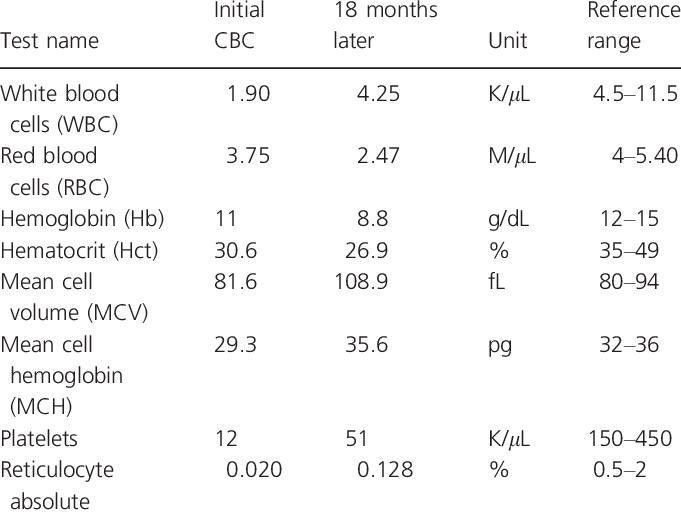 If you are offered a test, make the appointment as soon as possible, or you can always walk up to a drop box location to pick up a kit without an appointment while a staff member is there.
If you are offered a test, make the appointment as soon as possible, or you can always walk up to a drop box location to pick up a kit without an appointment while a staff member is there.
We can only offer testing once every 3 days, at most. To ensure more accurate results, your testing invite may be delayed if you report a high risk exposure in the last 2 days or attending a community gathering in the last 24 hours.
Once you are vaccinated, please continue to participate in Husky Coronavirus Testing by completing your daily check-ins. You should get tested for COVID-19 each time you develop any symptoms or had close contact with a person with known COVID-19.
The vaccine will help prevent you from getting sick with COVID-19, but this protection is not 100%, and we do not know if the vaccine will prevent you from spreading the virus to others.
Getting a COVID-19 vaccine will not cause you to test positive using the viral COVID-19 tests in Husky Coronavirus Testing.
When you receive a test through our program, you will swab yourself, either in a testing kiosk or wherever you choose with a testing kit. We use shorter nasal swabs, which look like miniature plastic honey dippers, that only reach the front part of your nose. You may have mild discomfort such as a tickly or runny nose, watery eyes or sneezing. The process lasts just 15 seconds per nostril.
It normally takes 24-72 hours to process and return test results after the lab receives your sample. If your results are not available to you after 72 hours from the lab receiving your sample, please contact us.
You will get an email or a text that includes your barcode information and a link to the online results portal after you completed an in-person testing appointment or after the lab has received your at-home testing kit. You can input your barcode and date of birth at seattleflu.org/results to view your results.
Since Husky Coronavirus Testing is a research study and the results we provide are research results, some travel agencies and countries do not accept our tests for their travel requirements. In addition, there is not a timestamp on your results page. Please check with your travel agency and the country you are traveling to on their acceptable testing requirements.
In addition, there is not a timestamp on your results page. Please check with your travel agency and the country you are traveling to on their acceptable testing requirements.
Stay home and self-isolate from others for 5 days since your test date. If you are experiencing symptoms, stay home until your symptoms start to resolve. Do not go to work or class. If you live in a residence hall, notify residence hall staff who will help facilitate your self-isolation.
If you test positive for COVID-19, UW Environmental Health & Safety will reach out to you for follow up. They will ask standard questions to support your isolation and to prevent transmission on campus and among University community members. They will contact UW employees and/or students you may have been in contact with recently, and provide public health guidance. The local health department may also reach out to you with similar questions. For more information, see “What to do if I have confirmed COVID-19?”
If your test result is inconclusive, it is treated like a positive test result.
Stay home and self-isolate from others for 10 days since your test date. If you are experiencing symptoms, stay home for 10 days from when your symptoms started and 24 hours after your symptoms resolve. Do not go to work or class. If you live in a residence hall, notify residence hall staff who will help facilitate your self-isolation.
UW Environmental Health & Safety will reach out to you for follow up. They will ask standard questions to support your isolation and to prevent transmission on campus and among University community members. They will contact UW employees and/or students you may have been in contact with recently, and provide public health guidance. The local health department may also reach out to you with similar questions. For more information, see “What to do if I have confirmed COVID-19?”
Since Husky Coronavirus Testing is a research study and the results we provide are research results, some travel agencies and countries do not accept our tests for their travel requirements. In addition, there is not a timestamp on your results page. Please check with your travel agency and the country you are traveling to on the acceptable testing requirements.
In addition, there is not a timestamp on your results page. Please check with your travel agency and the country you are traveling to on the acceptable testing requirements.
The UW will not use information from this program to discipline individuals. UW Environmental Health & Safety (EH&S) will be informed if you have tested positive for COVID-19, or if you report a positive rapid antigen self-test on your daily attestation, so that they may perform contact tracing and assist with any quarantine needs. Public Health — Seattle & King County (Seattle and Bothell campuses) or Tacoma-Pierce County Health Department (Tacoma campus), along with the Washington State Department of Health are informed of COVID-19 test results to provide assistance and perform contact tracing, if needed. We will not share your RSV and influenza results with the University of Washington or local public health agencies.
When you test positive for COVID-19, there is a possibility that you will test positive again, even when you are not infectious. If you test positive for COVID-19, you can get re-tested through Husky Coronavirus Testing beginning 90 days after your positive test result per CDC guidelines. If you experience new symptoms and/or exposures within 90 days then you should contact a healthcare provider for further evaluation.
If you test positive for COVID-19, you can get re-tested through Husky Coronavirus Testing beginning 90 days after your positive test result per CDC guidelines. If you experience new symptoms and/or exposures within 90 days then you should contact a healthcare provider for further evaluation.
If you have tested positive for COVID-19 within the last 10 days, please follow the instructions in the “What do I do if I have confirmed or suspected COVID-19?” Q&A.
If you have tested positive for COVID-19 prior to that, you can still enroll in Husky Coronavirus Testing. Currently, the likelihood of becoming infected more than once is not well understood. If you were to develop symptoms again after 90 days, we recommend repeat testing. You can also enroll any time during the year if you develop symptoms or decide you’d like to enroll.
This study will run from September 2020 through spring quarter 2023.
The goal of the study that powers the Husky Coronavirus Testing program is to describe the clinical and virologic characteristics of cases of the novel coronavirus and other respiratory viruses in the UW community. This will allow the UW to provide support to individuals who test positive, as well as to better understand transmission among the community, including symptomatic and asymptomatic cases. The findings from this study will help to inform the development of new systems to help prevent the spread of pathogens on college campuses and other educational facilities.
This will allow the UW to provide support to individuals who test positive, as well as to better understand transmission among the community, including symptomatic and asymptomatic cases. The findings from this study will help to inform the development of new systems to help prevent the spread of pathogens on college campuses and other educational facilities.
There are several reasons for why testing is being offered through this research study.
First, it gives us the opportunity to answer important scientific questions that can inform the broader community. As a clinical test site, we would not be able to collect important information in a systematic way, especially around symptoms, exposure risk, travel history, vaccine status, mask use and other important topics.
Second, through a research study, we are also able to look at the way the virus is spreading in the community using viral sequencing, linking variant information to this other data that we have collected.
Third, we are able to utilize innovative methods that are not possible as part of a regular clinical testing site, including using drop boxes for swab collection, testing out different types of swabs and lab assays, and other important new methods that can help move the field forward and help other researchers, clinicians, and public health professionals make decisions.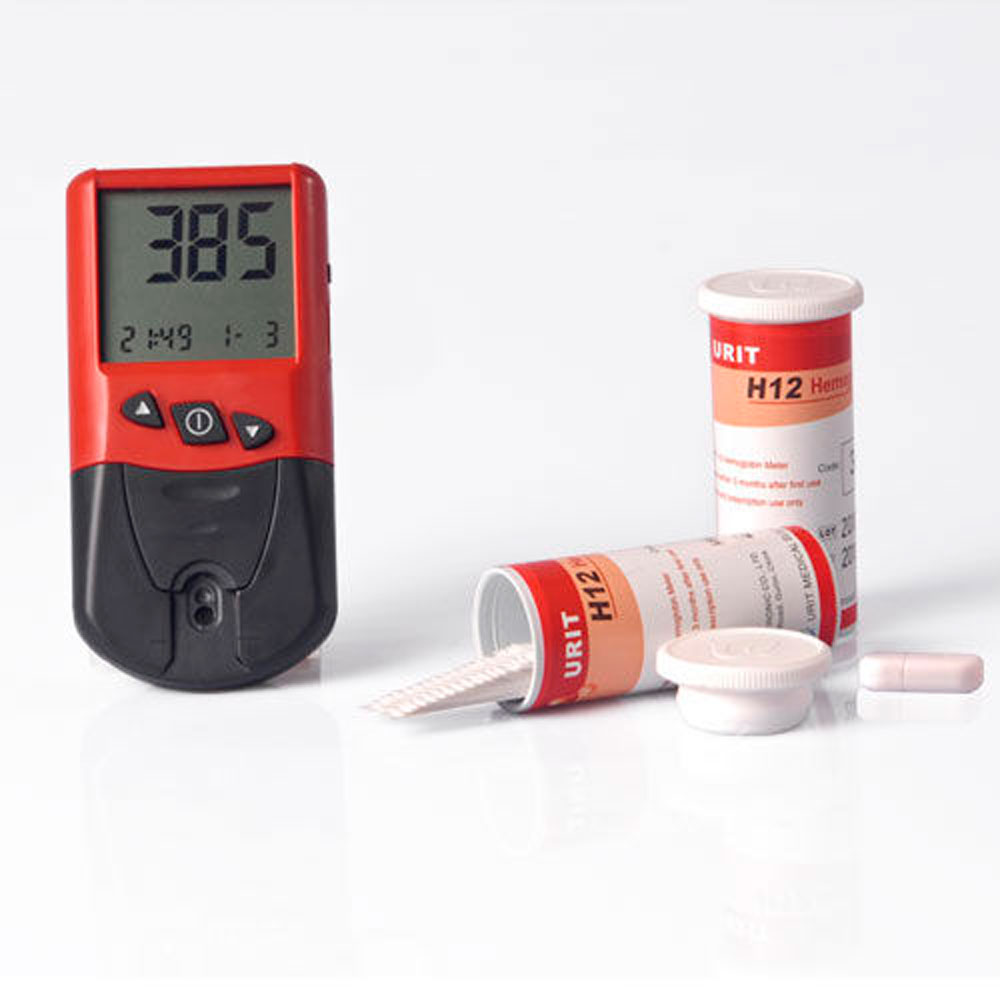
We acknowledge that having the most available way to get tested through a research study is a valid concern. However, testing is available through many options, as listed on the UW website, including sites in the community and at the hospitals. Due to factors beyond our control, there are times when getting tested with HCT will be more convenient than other testing options, and at unique times HCT may be the only option for various reasons such as during large peaks in the community when other testing sites have limited availability. Unfortunately, the research team cannot control the availability at other testing sites or their capacity for expansion in response to demand.
We have considered having a non-research test available, but we are not able to test in a non-research manner. We want to emphasize that even though HCT is a research study, we maintain the same clinical standards for our research tests. There are many regulatory and logistical issues with trying to do both research and clinical testing at the same time.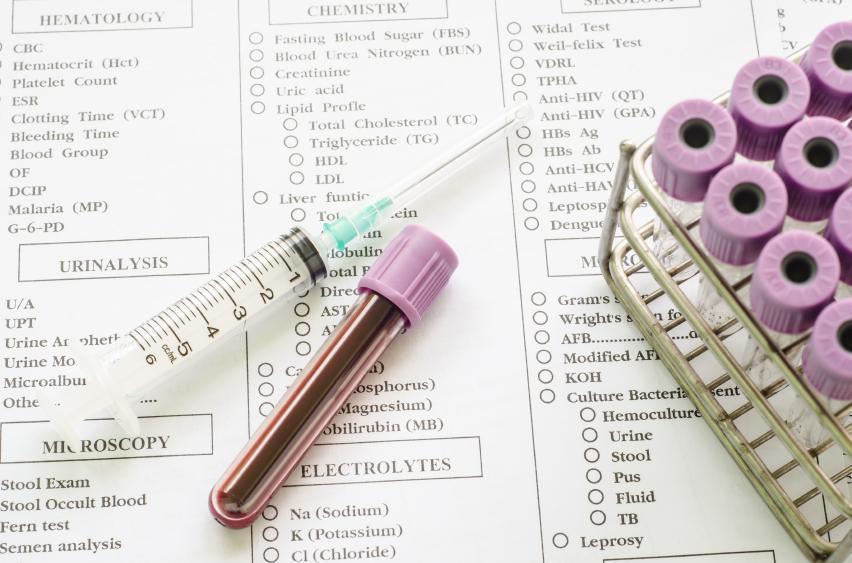 The types of tests we can offer are different for the two groups and how we collect and process the sample is also different. Much of what we do as a research lab has allowed us to develop new, more efficient methods that others have been able to adopt in other testing platforms. Collecting data about COVID-19 is also important to report as research on a large scale, because this is how the scientific community learns about COVID-19.
The types of tests we can offer are different for the two groups and how we collect and process the sample is also different. Much of what we do as a research lab has allowed us to develop new, more efficient methods that others have been able to adopt in other testing platforms. Collecting data about COVID-19 is also important to report as research on a large scale, because this is how the scientific community learns about COVID-19.
Your privacy is extremely important to us. Only the Seattle Flu Study research team, UW Environmental Health & Safety (EH&S), and local and state public health departments will have access to your data. These groups will follow privacy rules and regulations and will use your information only for public health and research purposes. No data directly linked to you will ever be made publicly available. To protect access to your results, you will be given a personal barcode.
All study information is protected in a secure, confidential manner with industry standard encryption. We will also store aggregated information separately from your personal information in order to understand trends in how coronavirus is spreading.
We will also store aggregated information separately from your personal information in order to understand trends in how coronavirus is spreading.
Washington State law requires that all notifiable conditions including COVID-19 be reported to local health jurisdictions and the Washington State Department of Health. If your sample tests positive for one of these conditions, these organizations and/or UW EH&S will likely contact you to ask you additional questions. They will keep your information private. The UW and local and state health agencies also publicly report the number of positive tests for COVID-19, however these statistics do not contain personally identifiable information.
The UW will not use information from this program to discipline individuals.
Most people with influenza or RSV infections do not need medical care or antiviral drugs. In most cases, it’s best to stay home and avoid contact with other people. If you have other health problems or are very sick or are worried about your illness, you should contact your health care provider. Here are some resources on RSV and Influenza from the U.S. Centers for Disease Control and Prevention (CDC) :
Here are some resources on RSV and Influenza from the U.S. Centers for Disease Control and Prevention (CDC) :
- Key facts about influenza
- RSV in infants and young children
- Older adults are at high risk for severe RSV infection
Because there are multiple viruses circulating, our team wanted to test for influenza, RSV and COVID-19 to answer more questions about respiratory illness in our community. There are no changes to the participant’s study procedures and you will now be able to see results for the three viruses in your results portal for any new swabs collected.
We would be happy to discuss your questions. Please send us an email at [email protected] or call 206-616-2414.
Husky Coronavirus Testing is powered by the Seattle Flu Study team with the support of the Brotman Baty Institute.
High, Low, and Normal HCT
The Hematocrit test is a blood test that is used to calculate the total amount of red blood cells in the body. It is called the HCT, Packed-Cell Volume (PCV), or Erythrocyte Volume Fraction test.
It is called the HCT, Packed-Cell Volume (PCV), or Erythrocyte Volume Fraction test.
Abnormal HCT means a blood disease or any underlying health condition. In such circumstances, patients need medical attention and care.
Table of Content
What is the normal range of hematocrit test?
Hematocrit levels not only depend on the health condition but also on age and gender. Depending upon the demographic groups, these HCT levels are considered normal:
Demographic Groups | HCT Levels |
Male | 41% – 50% |
Female | 36% – 44% |
Infants | 32% – 42% |
| Newborns | 45% – 61% |
What are the causes of high hematocrit?
High HCT indicates higher amounts of RBCs in the bloodstream. A number of factors including both medical and individual practices can result in high HCT. A few of such factors include:
A few of such factors include:
- Cardiac issues: People with heart issues — such as arrhythmia, valve disease, or hypertension have increased production of RBCs.
- Dehydration: Water content in the body begins to drop, causing dehydration. It decreases blood circulation, stimulating the production of RBCs.
- Unhealthy lungs: Poor functioning of the lungs due to scarring or thinning of the tissues obstructs the flow of red blood cells. This raises the production of red blood cells.
- Obstructive sleep apnea: The blockage of airflow in the lungs while asleep diminishes oxygen levels. This raises RBCs in the bloodstream.
- Smoking: Excessive smoking multiplies the production of the kidney hormone erythropoietin. This hormone rises the levels of red blood cells.
- Medication: Some medicines, especially those considered androgenic hormones, increase the production of RBCs in the bloodstream.

- Carbon monoxide: Increased carbon monoxide due to inhalation of polluted air reduces blood plasma. This increases the production of blood cells, causing high HCT.
How to decrease high hematocrit levels?
Patients can reduce high HCT levels by eating a nutrient-rich diet and opting for a healthy lifestyle, which includes;
- Avoid excessive smoking. Use a face mask to avoid polluted air entering the lungs.
- Consuming a healthy diet, — comprising of fruits, leafy green vegetables, whole-grain, or healthy fats
- Drink water and fruit juices to promote hydration.
What are the causes of low hematocrit?
Certain health conditions or accidental injuries can inhibit red blood cells or cause internal or external bleeding. This decreases blood count, resulting in low HCT. Some of such major causes of low HCT include:
- Anemia: The deficiency of hemoglobin in the blood can result in different types of anemia, — including aplastic anemia, iron deficiency anemia, sickle cell anemia, thalassemia, or vitamin deficiency anemia.

- Bone marrow disorders: Patients suffering from disorders that affect bone marrow — such as leukemia, lymphoma, multiple myeloma, or sickle cell disease have diminished RBCs.
- Renal disorders: Those patients who suffer from underlying kidney disorders — such as chronic stones, cancer, or polycystic kidney disease have shown a serious decline in the number of healthy RBCs.
- Hepatic disorders: Liver issues — especially liver cirrhosis, hepatitis, or liver cancer can reduce red blood cells, causing a severe drop in complete blood count.
- Autoimmune disorders: Different autoimmune health conditions — including Addison’s disease, celiac disease, grave’s disease, or multiple sclerosis experience drops down the RBCs count.
- Malnutrition: Unhealthy diet doesn’t include essential nutrients, which leads to malnutrition. This reduces normal amounts of red blood cells, disrupting the normal functioning of the body.

What to increase low hematocrit?
A diet containing essential nutrients such as proteins, vitamins, minerals, or zinc can help increase HCT. Such foods include:
- Increase the consumption of red meat, especially liver
- Consume legumes namely lentils, peanuts, peas, and beans
- Add dried fruits — like apricot, walnut, almond, prunes, or raisins to daily intake
- Incorporate seafood such as fish, oysters, or shrimp in the diet
- Eat green leafy vegetables — including spinach, kale, cabbage, watercress, or lettuce
- Have vitamin C-rich edibles — such as lemon, orange, or tomatoes
How is the hematocrit test carried out?
An HCT test helps doctors evaluate the complete blood count. It helps the diagnosis of underlying health conditions such as anemia, leukemia, infections, and different types of cancer. A phlebotomist will carry out the HCT to evaluate the patient’s health as follows:
A phlebotomist will carry out the HCT to evaluate the patient’s health as follows:
- A blood sample is taken from the patient’s vein.
- Extracted blood is transferred to the capillary tube, ensuring the absence of air bubbles.
- The capillary tube containing blood is carefully placed in a centrifuge machine. It spins the tube at high speeds, separating the blood content. The denser red blood cells settle at the bottom of the tube.
- The red blood cells are separated and then calculated using a specialized hematocrit reader.
After blood sampling, the patient may experience pain, bruising, and lightheadedness for a short time period.
Get your overall health evaluated by booking an immediate Hematocrit test with the best medical laboratory at discounted rates.
Eiman Sajjad
With a knack for translating authentic information into words, Eiman writes for the well-being of the mankind. At Marham.pk, she aims to apply ‘Marham’ on the ailing, aching humanity with her well-researched, curative content.
At Marham.pk, she aims to apply ‘Marham’ on the ailing, aching humanity with her well-researched, curative content.
Level 1 immunogram tests – find out prices for analysis and take them in Katav-Ivanovsk
- INVITRO
- Analyzes
- Immunological…
- Complex…
- Immunogram tests 1…
- Program examinations for office workers
- Examination of household personnel
- Assessment of the risk of developing diseases of the cardiovascular system
- Diagnosis of antiphospholipid syndrome (APS)
- COVID-19
- Liver function tests
- Kidney and genitourinary tests
- Gastrointestinal tests
- Connective tissue tests
- Diabetes tests
- Diagnosis of anemia
- Oncology
- Diagnosis and control of therapy osteoporosis
- Blood biochemistry
- Thyroid diagnostics
- Hospital profiles
- Healthy you – healthy country
- Gynecology, reproduction
- Healthy child: for children from 0 to 14 years old
- Sexually transmitted infections (STIs)
- Weight problems
- VIP-about follow-up
- Respiratory diseases
- Allergy
- Determination of micronutrient reserves in the body
- Beauty
- Vitamins
- Diets
- Pre-diet lab tests
- Sports profiles
- Hormonal tests for men
- Depression
- Laboratory tests for medical information
- Biochemical tests
- Glu goat and metabolites of carbohydrate metabolism
- Proteins and amino acids
- Bile pigments and acids
- Lipids
- Enzymes
- Kidney function markers
- Minerals/electrolytes:
- Vitamins
- Proteins involved in iron metabolism
- Cardiospecific proteins
- Markers of inflammation
- Markers of bone metabolism and osteoporosis
- Determination of drugs and psychoactive substances
- Biogenic amines 900 04
- Specific proteins
- Hormonal studies
- Laboratory evaluation pituitary-adrenal system
- Laboratory assessment of the somatotropic function of the pituitary gland
- Laboratory assessment of thyroid function
- Assessment of parathyroid function
- Pituitary gonadotropic hormones and prolactin
- Estrogens and progestins
- Assessment of androgenic function
- Non-steroidal regulatory factors of the sex glands
- Pregnancy monitoring, biochemical markers of fetal status
- Laboratory evaluation of endocrine pancreatic function and diagnosis of diabetes
- Biogenic amines
- Laboratory assessment of the state of the renin-angiotensin-aldosterone system
- Factors involved in the regulation of appetite and fat metabolism
- Laboratory assessment of the endocrine function of the gastrointestinal tract
- Laboratory assessment of the hormonal regulation of erythropoiesis
- Laboratory assessment of pineal function
- Analyzes for healthy lifestyle
- Hematological examinations
- Clinical blood test
- Immunohematological examinations
- Coagulological studies (coagulogram)
- Immunological studies
- Comprehensive immunological studies
- Lymphocytes, subpopulations
- Immunoglobulins
- Component Complement s
- Regulators and mediators of immunity
- Allergological tests
- allergy tests), mixtures, panels, total IgE.

- IgG, allergen-specific
- ImmunoCAP technology
- AlcorBio technology
- ALEX technology
- allergy tests), mixtures, panels, total IgE.
- Autoimmune disease markers
- Systemic connective tissue diseases
- Rheumatoid arthritis, lesions joints
- Antiphospholipid syndrome
- Vasculitis and kidney lesions
- Autoimmune lesions of the gastrointestinal tract . Celiac disease
- Autoimmune liver disease
- Neurological autoimmune disease
- Autoimmune endocrinopathies
- Autoimmune skin diseases
- Lung and heart diseases
- Immune thrombocytopenia
- Tumor markers
- COVID- 19
- Microelements
- Aluminum
- Barium
- Beryllium
- Boron
- Vanadium
- Bismuth
- Tungsten
- Gallium
- Germanium
- Iron
- Gold
- Iodine
- Cadmium
- Potassium
- Calcium
- Cobalt
- Silicon
- Lanthanum
- Lithium
- Magnesium
- Manganese
90 015 Copper
- Molybdenum
- Arsenic
- Sodium
- Nickel
- Tin
- Platinum
- Mercury
- Rubidium
- Lead
- Selenium
- Silver
- Strontium
- Antimony
- Thallium
- Phosphorus
- Chrome
- Zinc
- Zirconium
- Biochemical tests
- Analysis of the structure of the kidney stone
- Urinalysis
- Clinical analysis of urine
- Biochemical analysis of urine
9 0004
- Fecal examination
- Clinical stool examination
- Fecal chemistry
- Semen examination
- Antisperm antibodies
- Diagnosis of infectious diseases
- Viral infections
- Bacterial infections
- Fungal infections
- Parasitic infections
- Streptococcal infections
- Cytological examinations
- Histological examinations
- Cytogenetic studies
- Non-invasive prenatal tests
- Genetic predispositions
- Lifestyle and genetic factors
- Reproductive health
- Immunogenetics
- Rh factor
- Blood coagulation system
- Diseases of the heart and blood vessels
- Diseases of the gastrointestinal tract
- Diseases of the central nervous system
- Oncological diseases
- Metabolic disorders
- Description of the results of genetic studies by a geneticist
- Pharmacogenetics
- System for detoxification of xenobiotics and carcinogens
- Fetal sex determination
- Fetal Rh factor
- Hereditary diseases
- Hereditary metabolic diseases
- Hereditary metabolic diseases
- Additional tests (after screening and consultation with a specialist)
9000 4
- Definition of biological relationship: paternity and motherhood
- Definition biological relationship in the family: fatherhood and motherhood
- Water and soil quality research
- Water quality test
- Soil test
- Diagnosis of liver pathology without biopsy: FibroMax, FibroTest, SteatoScreen
- Calculated tests based on SteatoScreen results without blood sampling
900 13
- Dysbiotic conditions of the intestine and urogenital tract
- General assessment of the natural microflora of the body
- Study of the microbiocenosis of the urogenital tract
- Femoflor: profiles of studies of dysbiotic conditions of the urogenital tract in women
- Specific assessment of the natural microflora of the body
- Test results form in English
9001 5 Oncogenetic studies
- Blood
- Urine 900 04
- Cal
- Spermogram
- Gastropanel
- Endoscopy
- Functional diagnostics
- ultrasound
- Examinations we do not do
- New tests
- Getting results
- Additional research orders
- Medical consultant service
- Professional position
- Venous blood for analysis
- Tumor markers.
 View of a practical oncologist. Laboratory justifications.
View of a practical oncologist. Laboratory justifications. - Testosterone: diagnostic threshold, method-dependent reference values
- Laboratory assessment of lipid parameters in INVITRO
- Lipid profile: fasting or not fasting
The cost of analyzes is indicated without taking biomaterial
Description
Method of determination
Phagocytic activity – assessment of phagocytosis of bacteria with a fluorescent label. Immunoglobulins A, M, G – immunoturbidimetry.
Test material
Whole blood with EDTA, whole blood with heparin, blood serum
Evaluation of the state of various parts of the immune system used in the diagnosis of primary and secondary immunodeficiencies, autoimmune, lymphoproliferative, infectious, hematological diseases.
The profile includes the following indicators:
- Concentration CEC
- Pathogenicity CEC
- Act.
 neutrophil phagocytosis
neutrophil phagocytosis - Phagocyte. the number of neutrophils.
- NBT spontaneous, activity (neutral)
- HCT induced, activity (neutral)
- HCT Stimulation Index (neutral)
- Act. phagocytosis of monocytes
- Phagocyte. number of monocytes
- NST spontaneous, activity (mon.)
- HCT induced, activity (mon.)
- NST test stimulation index (mon.)
- Leukocytes
- Neutrophils (total number)
- Lymphocytes, %
- Lymphocytes
- Monocytes, %
- Monocytes
- Eosinophils
- Basophils
- IgA
- IgM
- IgG
The main subpopulations of lymphocytes:
T-lymphocytes are lymphocytes that mature in the thymus (hence their name). They control the work of B-lymphocytes responsible for the formation of antibodies, i.e. for the humoral immune response. T-helpers, Th (from English to help – to help) – a type of T-lymphocytes, carry structures on their surface that facilitate the recognition of antigens presented by auxiliary cells, participate in the regulation of the immune response, producing various cytokines. Cytotoxic T cells – recognize antigen fragments on the surface of target cells, orient their granules towards the target and release their contents in the area of contact with it. At the same time, some cytokines are a signal of death (by the type of apoptosis) for target cells.
Cytotoxic T cells – recognize antigen fragments on the surface of target cells, orient their granules towards the target and release their contents in the area of contact with it. At the same time, some cytokines are a signal of death (by the type of apoptosis) for target cells.
B-lymphocytes (from the Latin “bursa” – a bag named after the bag of Fabricius, in which these lymphocytes mature in birds) develop in the lymph nodes and other peripheral organs of the lymphoid system. On the surface, these cells carry immunoglobulins that function as antigen receptors. In response to interaction with the antigen, B-lymphocytes respond by dividing and differentiating into plasma cells that produce antibodies, through which humoral immunity is provided.
NK cells (natural killer cells) or natural killer cells with natural, non-immune cytotoxic activity against neoplastically altered target cells, which are neither mature T- or B-lymphocytes, nor monocytes. T-NK cells (NKTs) are cells with natural non-immune killer activity that have the characteristics of T-lymphocytes.
Activated lymphocytes.
HLA-DR is one of the MHC class II (major histocompatibility complex) antigens involved in the presentation of potentially foreign antigens, which is necessary for the formation of an adequate immune response. In immunophenotyping, it can be used as a marker of activated cells. CD3+HLA-DR+ cells are mature activated human T-lymphocytes. CD3-HLA-DR+ – activated cells other than T-lymphocytes (B-lymphocytes and activated NK).
The ability of lymphocytes to activate.
The ability of lymphocytes to activate in this test is assessed by the content of lymphocytes expressing CD69 in response to incubation in the presence of PHA (plant-derived mitogen). CD69 (other names – activation inducer molecule, AIM; early activation antigen, EA-1) is an early activation marker, type I transmembrane protein. This protein is involved in the early mechanisms of activation of T cells, NK cells, B cells, monocytes and platelets.
Phagocytic activity of leukocytes.
Data on the phagocytic activity of neutrophils and monocytes (relative content of cells that phagocytized fluorescently labeled bacteria added to the sample during incubation) allow us to evaluate the reserve capacity of these cells to absorb and digest foreign agents.
Circulating immune complexes general (CIC)
The simultaneous presence of high concentrations of antigens and their specific antibodies can lead to the formation of circulating immune complexes. Immune complexes can leave the bloodstream in small vessels and be deposited in tissues, for example, in the glomeruli of the kidneys, in the lungs, skin, joints, and vessel walls. CECs have the ability to bind and activate complement, which leads to tissue damage. An increase in the level of the CEC can be observed in autoimmune diseases, chronic infectious diseases, in which the constant production of an antigen by an infectious agent is combined with an immune response to it (chronic hepatitis). Clinically, this is often manifested by glomerulonephritis, arthritis, and neuropathy. Despite the direct role in the pathogenesis of some diseases, the determination of the CEC is not always informative, since the amount of immune complexes deposited in tissues is more important than the number of complexes circulating in the blood. The study of the CEC may not be sufficiently sensitive and specific in the diagnosis of diseases caused by immune complexes, and should be supplemented by the study of the effects of the CEC on organ function (for example, creatinine concentration and urinalysis), as well as the determination of C3 C4 complement components (see test No. 193), the number of which decreases due to increased consumption.
Clinically, this is often manifested by glomerulonephritis, arthritis, and neuropathy. Despite the direct role in the pathogenesis of some diseases, the determination of the CEC is not always informative, since the amount of immune complexes deposited in tissues is more important than the number of complexes circulating in the blood. The study of the CEC may not be sufficiently sensitive and specific in the diagnosis of diseases caused by immune complexes, and should be supplemented by the study of the effects of the CEC on organ function (for example, creatinine concentration and urinalysis), as well as the determination of C3 C4 complement components (see test No. 193), the number of which decreases due to increased consumption.
Immunoglobulins. See information for tests Immunoglobulins IgG, IgA, IgM, – Nos. 45, 46, 47.
Immunological data are interpreted by an immunologist in combination with all clinical and anamnestic data of a particular patient. When assessing the immune status of a patient, the results of the study are evaluated in terms of the nature and stage of the pathological process, concomitant diseases, medication, etc. In this case, not only the absolute values of individual indicators are important, but also their ratio and dynamics of indicators. Changes in immunological parameters can be a manifestation of the body’s normal response to the impact of physiological or pathological factors (with a different pattern of shifts at different stages of the disease), reflect excessive activation, depletion of the immune system, characterize a congenital or acquired defect in individual parts of the immune system.
In this case, not only the absolute values of individual indicators are important, but also their ratio and dynamics of indicators. Changes in immunological parameters can be a manifestation of the body’s normal response to the impact of physiological or pathological factors (with a different pattern of shifts at different stages of the disease), reflect excessive activation, depletion of the immune system, characterize a congenital or acquired defect in individual parts of the immune system.
Preparation
Strictly on an empty stomach (from 7.00 to 11.00) after an overnight fasting period of 8 to 14 hours.
On the eve of the study, it is necessary to exclude increased psycho-emotional and physical activity (sports training), alcohol intake, and smoking an hour before the study.
Indications for use
- Recurrent infections, infectious diseases with a chronic and protracted course.
- Suspicion of genetically determined or acquired immunodeficiency.

- Autoimmune diseases.
- Allergic diseases.
- Suspicion of acquired immunodeficiency syndrome (AIDS).
- Oncological diseases.
- Examination of recipients before and after organ transplantation.
- Examination of patients before major surgery.
- Complicated course of the postoperative period.
- Control of therapy with cytostatics, immunosuppressants and immunomodulators.
Interpretation of results
Interpretation of test results contains information for the attending physician and is not a diagnosis. The information in this section should not be used for self-diagnosis or self-treatment. An accurate diagnosis is made by the doctor, using both the results of this examination and the necessary information from other sources: history, results of other examinations, etc.
Immunological data are interpreted by the doctor in combination with all clinical and anamnestic data of a particular patient. When assessing the immune status of a patient, the results of the study are evaluated in terms of the nature and stage of the pathological process, concomitant diseases, medication, etc. In this case, not only the absolute values of individual indicators are important, but also their ratio and dynamics of indicators.
When assessing the immune status of a patient, the results of the study are evaluated in terms of the nature and stage of the pathological process, concomitant diseases, medication, etc. In this case, not only the absolute values of individual indicators are important, but also their ratio and dynamics of indicators.
| Test name | Gender | Age | Reference values | Units measurements |
| Ig A | Male and Female | 0 days – 12 months | 0.0 – 0.3 | g/l |
Male and Female | 12 months – 3 years | 0. 0 – 0.9 0 – 0.9 | ||
Male and Female | 3 years – 6 years | 0.3 – 1.5 | ||
Male and Female | 6 years – 14 years | 0.5 – 2.2 | ||
Male and Female | 14 – 19 years old | 0.5 – 2.9 | ||
Male and Female | 19 years – 120 years | 0.7 – 4.0 | ||
| Ig M | Male and Female 0633 | 0.06 – 0.21 | g/l | |
| Female | 3 months – 12 months | 0.17 – 1.50 | ||
| Male | 3 months – 12 months | 0.17 – 1.43 | Female | 12 months – 12 years | 0.47 – 2.40 |
| Male | 12 months – 12 years | 0.41 – 1.83 | ||
| Female | 12 years – 120 years | 0. 33 – 2.93 33 – 2.93 | ||
| Male | 12 – 120 | 0.22 – 2.40 | ||
| Ig G | Women 2 | |||
| Male | 0 days – 30 days | 3.97 – 17.65 | ||
| Female | 30 days – 12 months | 2.03 – 9.34 | ||
| Male | 30 days – 12 months | 2.05 – 9.48 | ||
| Female | 12 months – 2 years | 4.83 – 12.26 | ||
| Male | 12 months – 2 years | 4.75 – 12.10 | ||
| Female | 2 years – 120 years | 5.52 – 16.31 | ||
| Male | 2 years – 120 years | 5.40 – 18.22 | ||
| Basophils | Male and Female | 1 day – 120 years | 0 .0 – 1.0 | % |
| Concentration CEC | Male and Female | 0 days – 120 years | 0 – 90 | c.u. |
| CEC pathogenicity | Male and Female | 0 days – 120 years | 1. 1 – 1.5 – medium, pathogenic 1 – 1.5 – medium, pathogenic> 1.5 – small, pathogenic | c.u. |
| Eosinophils | Male and Female | 1 day – 15 days | 1.0 – 6.0 | % |
| Male and Female | 15 days – 12 months | 1.0 – 5.0 | ||
| Male and Female | 12 months – 2 years 0 | |||
| Male and Female | 2 years – 5 years | 1.0 – 6.0 | ||
| Male and Female | 5 years – 120 years | 1.0 – 5.0 | ||
| Act. phagocytosis of monocytes | Male and Female | 12 months – 120 years | 33 – 57 | % |
| Act. phagocytosis of neutrophils | Male and Female | 12 months 120 years | 50 – 85 | % |
| Phagocyte. number of monocytes | Male and Female | 12 months – 120 years | > 2. 3 3 | particles/phagocytes |
| Phagocyte. the number of neutrophils. | Male and Female | 12 months – 120 years 99/L | ||
| Male and Female | 2 days – 5 days | 1.60 – 6.0 | ||
| Male and Female | 5 days – 28 days | 2.80 – 9.00 | ||
| Male and Female | 28 days – 6 months | 4.00 – 13.50 | ||
| Male and Female | 6 months – 12 months | 4.00 – 10.50 | ||
| Male and Female | 12 months – 2 years | 3.00 – 9.50 | ||
| Male and Female | 2 years – 4 years | 2.00 – 8.00 | ||
| Male and Female | 4 years – 6 years | 1.50 – 7.00 | ||
| Male and Female | 6 years – 10 years | 1.50 – 6.50 | ||
| Male and Female | 10 years – 21 years | 1.00 – 4.80 | ||
| Female | 21 – 120 years | 1..gif) 18 – 3.74 18 – 3.74 | ||
| Male | 21 – 120 years old | 1.32 – 3.57 | ||
| Monocytes, % | Male and Female 9063 3 | 1 day – 15 days | 5.0 – 15.0 | % |
| Male and Female | 15 days – 12 months | 4.0 – 10.0 | ||
| Male and Female | 12 months – 2 years | 3.0 – 10.00 | ||
| Male and Female | 2 years – 5 years 99/L | |||
| Male and Female | 2 days – 28 days | 0.00 – 1.70 | ||
| Male and Female | 28 days – 6 months | 0.00 – 1.17 | ||
| male and female | 6 months – 12 months | 0.00 – 1.15 | ||
| male and female | 12 months – 2 years | 0.00 – 1.00 | ||
| Male and Female | 2 years – 21 years | 0.00 – 0.80 | ||
| Male and Female | 21 – 120 years | 0. 20 – 0.95 20 – 0.95 | ||
| Neutrophils (total) 90 633 | Male and Female | 0 days – 15 days | 31 .0 – 56.0 | % |
| Male and Female | 15 days – 12 months | 17.0 – 51.0 | ||
| Male and Female | 12 months – 2 years | 29, 0 – 54.0 | ||
| Male and Female | 2 years – 5 years | 33.0 – 61.0 | ||
| Male and Female | 5 years – 7 years | 39.0 – 64.0 | ||
| Male and Female | 7 years – 9 years | 42.0 – 66.0 | ||
| Male and Female | 9 years – 11 years | 44.0 – 66.0 | ||
| 11 years old – 15 years old | 46.0 – 66.0 | |||
| Male and Female | 15 years old – 120 years old 99/L | |||
| Male and Female | 12 months – 2 years | 6.00 – 17.00 | ||
| Male and Female | 2 years – 4 years | 5. 50 – 15.50 50 – 15.50 | ||
| Male and Female | 4 years – 6 years | 5.00 – 14.50 | ||
| Male and Female | 6 years – 10 years | 4.50 – 13.50 | ||
| Male and Female | 10 years – 16 years | 4.50 – 13.00 | ||
| Male and Female | 16 years – 120 years | 4.50 – 11.0 | ||
| HCT induced, activity (neutral) 9063 2 | Male and Female | 12 months – 120 years | 70 – 95 | % |
| HCT induced, activity (mon.) | Male and Female | 12 months – 120 years | 47 – 63 | % |
| Stimulus index . NST-test (neutral) | Male and Female | 0 days – 120 years | > 4.5 | c.u. |
| Stim. NST-test (mon.) | Male and Female | 0 days – 120 years | > 4.5 | c.u. |
| NST spontaneous activity (neutral) | Male and Female | 12 months – 120 years | 0.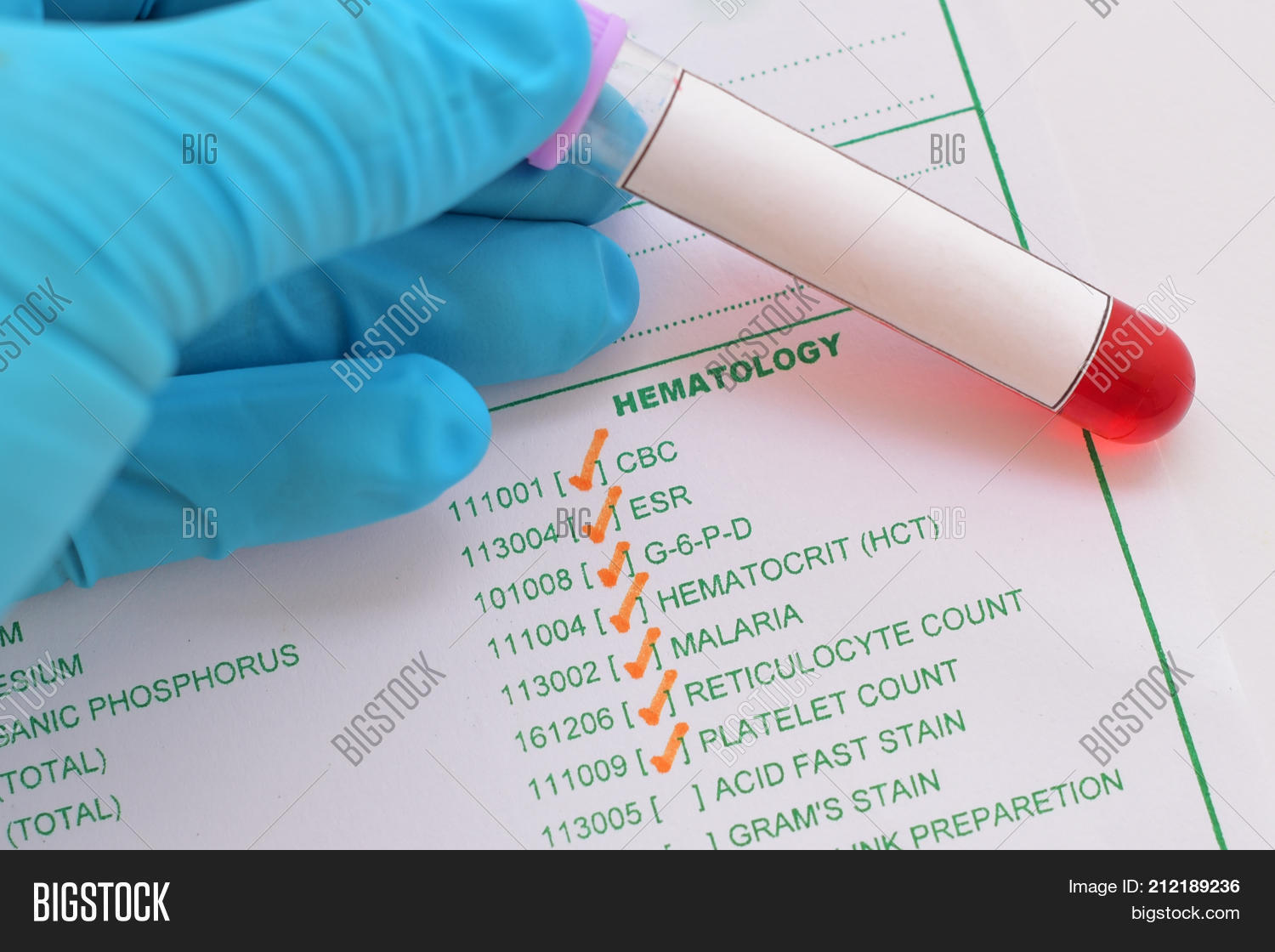 00 – 15.00 00 – 15.00 | % |
| NBT spontaneous, activity (mon. ) | Male and Female | 12 months – 120 years | 0 – 10 | % |
In this section you can find out how much it costs to complete this study in your city, read the description of the test and the table for interpreting the results. When choosing where to take the “Level 1 Immunogram Tests” analysis in Katav-Ivanovsk and other cities of Russia, do not forget that the price of the analysis, the cost of the procedure for taking biomaterial, the methods and terms for performing studies in regional medical offices may differ.
Evaluation of the bactericidal activity of neutrophils according to the nitroblue tetrazolium reduction test (NBT-test)
print version
Biomaterial
For this study, the laboratory accepts the following biomaterial:
- Blood with heparin
Restrictions in reception of a biomaterial are possible. Check the schedule of the office you need.
Check the schedule of the office you need.
Preparation for the study
Blood sampling is carried out strictly on an empty stomach (6-8 hours after the last meal).
Evaluation of the function of phagocytic cells is of great diagnostic value in infectious diseases. Neutrophils, monocytes/macrophages, and immature dendritic cells are considered to be the main phagocytes of greatest importance in anti-infective immunity. There are 2 types of test: spontaneous HCT test and stimulated HCT test.
Indications for examination:
- Examination for infectious diseases
- Evaluation of the effectiveness of therapy
Reference values:
| Parameter | Men | Women | Unit rev. |
|---|---|---|---|
| Spontaneous HBT test activity index | 2-26 | 2-28 | c.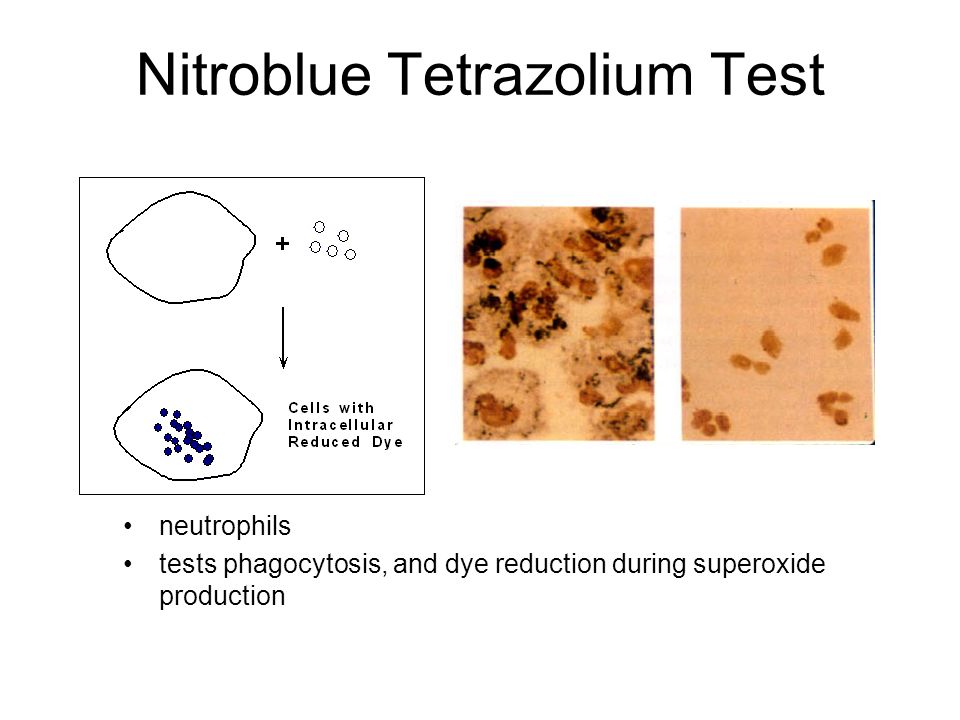 u. u. |
| Activity index of the stimulated NBT-test | Reference values are not used, the assessment is carried out by the attending physician, taking into account clinical and other laboratory data. | c.u. | |
| Percentage of HBT-positive leukocytes in a spontaneous test | 2-18 | 1-19 | % |
| Percentage of HCT-positive leukocytes in the stimulated test | Reference values are not used, the assessment is carried out by the attending physician, taking into account clinical and other laboratory data. | % | |
Interpretation is carried out by a doctor, taking into account clinical manifestations and anamnesis data.
| Downgrade | Level up |
|---|---|
|
|
We draw your attention to the fact that the interpretation of the results of studies, the establishment of a diagnosis, as well as the appointment of treatment, in accordance with the Federal Law No. 323-FZ “On the Fundamentals of Protecting the Health of Citizens in the Russian Federation” dated November 21, 2011, must be carried out by a doctor of the appropriate specialization.
323-FZ “On the Fundamentals of Protecting the Health of Citizens in the Russian Federation” dated November 21, 2011, must be carried out by a doctor of the appropriate specialization.
Code:
130005
can be taken at home
- Price:
When ordering several services at a time, the service for collecting biomaterial is paid only once.
620
R.
- + 220 rub. Blood sampling
Deadline:
The specified period does not include the day of taking the biomaterial.
1-5 k.d.
With this analysis order
Complete blood count + ESR with leukocyte formula (with microscopy of a blood smear in the presence of pathological changes), venous blood
results in 3-6 hours (CITO)
- Code:
- 110006
- Deadline:
- 1 k.
 d.
d.
Price:
755 rubles
Ferritin (Ferritin)
results in 3-6 hours (CITO)
- Code:
- 0
- Deadline:
- 1 k.d.
Price:
760 rubles
C-reactive protein – highly sensitive method – CRP
results in 3-6 hours (CITO)
- Code:
- 0
- Deadline:
- 1 k.


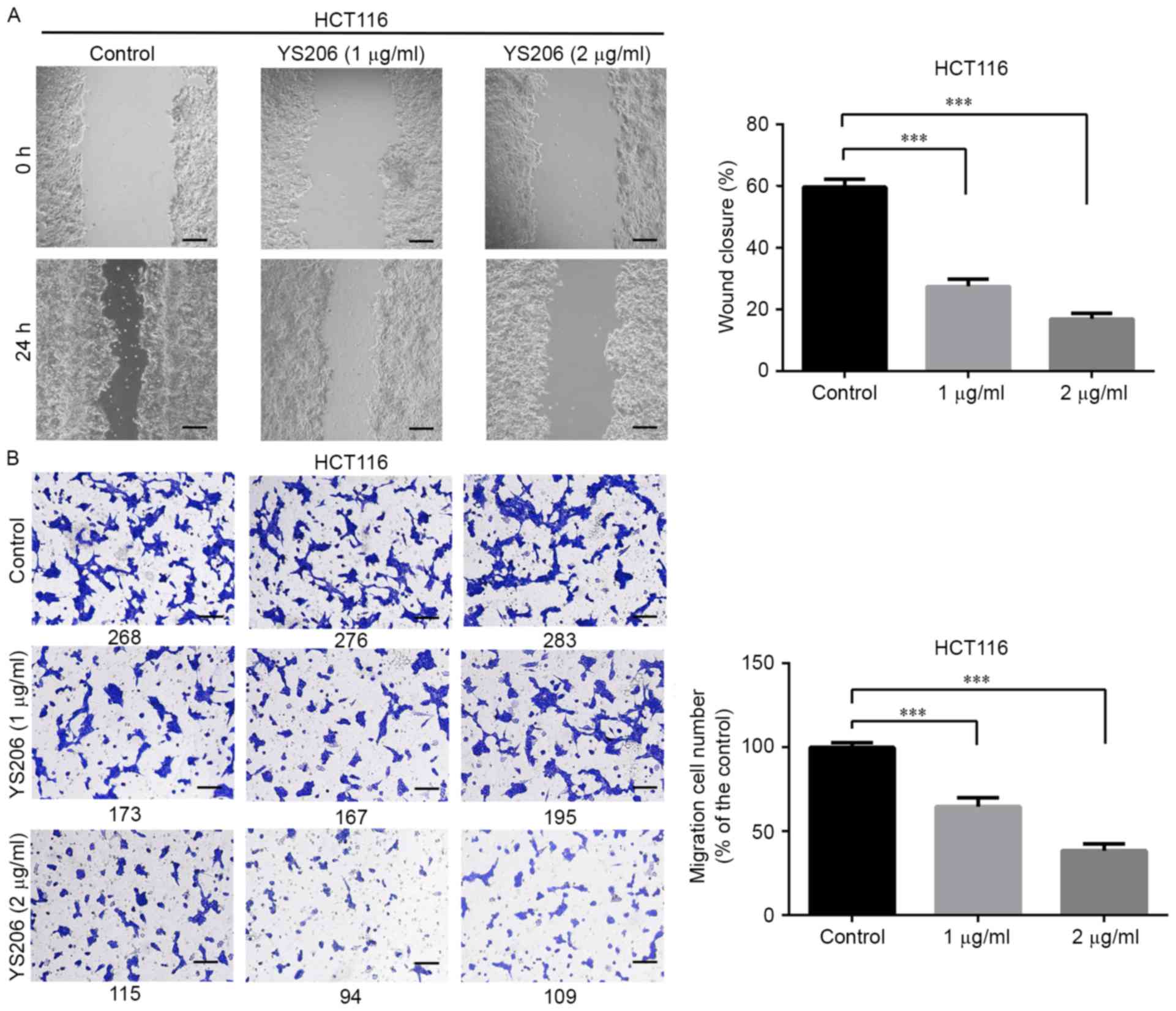
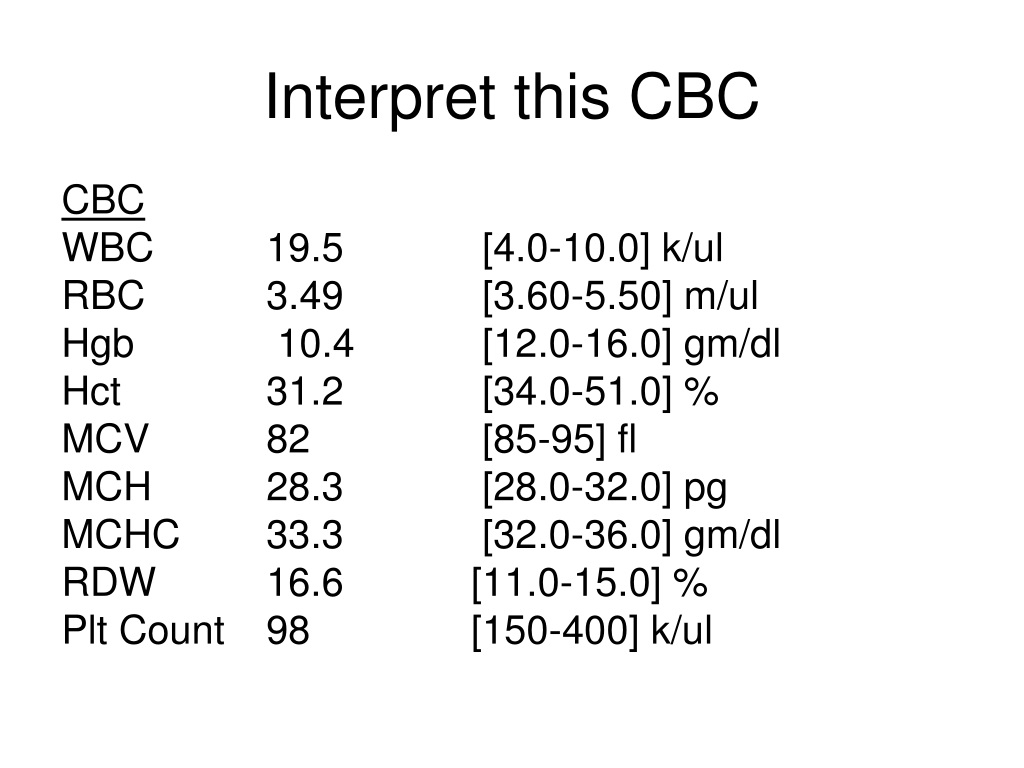 m. – 11:00 a.m.
m. – 11:00 a.m. You may also receive testing invitations based on outbreaks in your community (such as in a residence hall).
You may also receive testing invitations based on outbreaks in your community (such as in a residence hall).


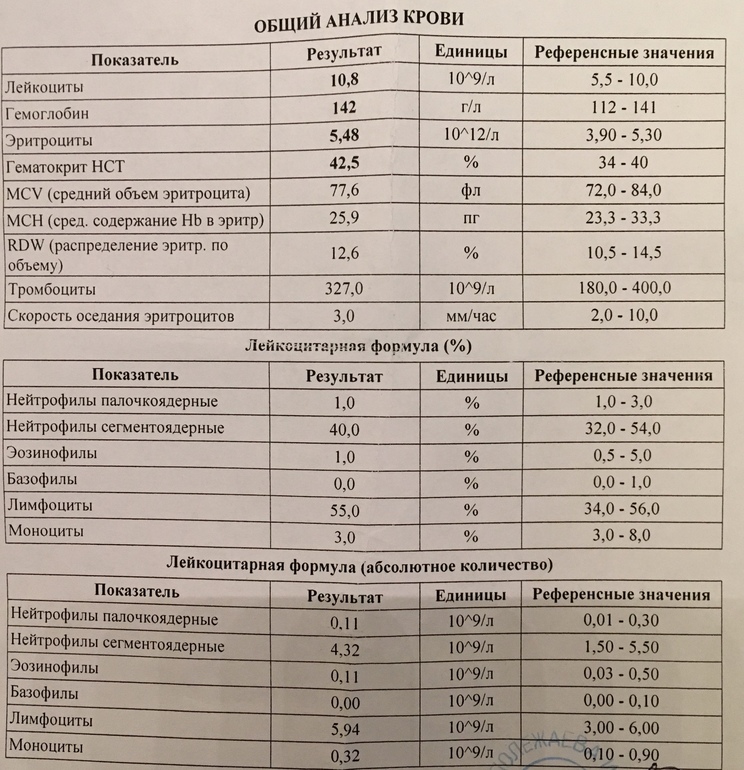
 View of a practical oncologist. Laboratory justifications.
View of a practical oncologist. Laboratory justifications. neutrophil phagocytosis
neutrophil phagocytosis
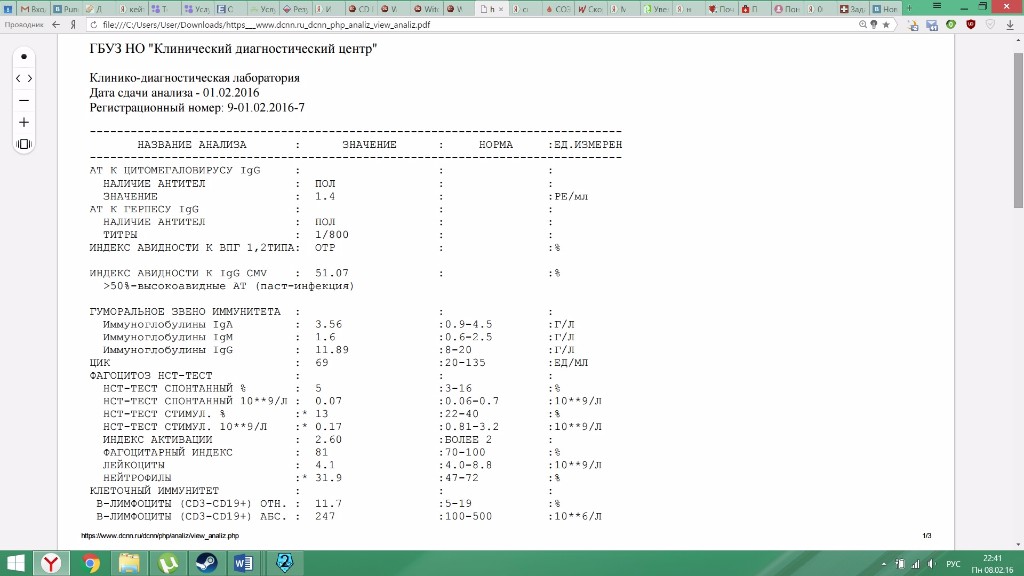
 d.
d.